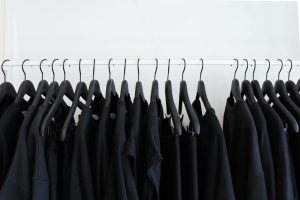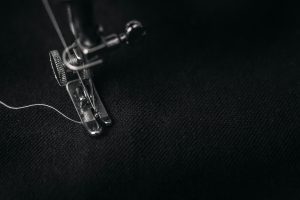Recycled Runways: How Deadstock Fabric is Revolutionizing Luxury
Luxury fashion has long been associated with exclusivity and excess, with the use of rare and expensive materials as the ultimate status symbol. However, as the fashion industry faces increasing pressure to become more sustainable, a new trend has emerged: recycled runways. At the forefront of this movement is the use of deadstock fabric, which is not only environmentally friendly but also revolutionizing the luxury fashion industry. In this article, we will explore the impact of recycled runways and how deadstock fabric is paving the way for a more sustainable future in luxury fashion.
The Rise of Recycled Runways
In recent years, there has been a growing awareness about the detrimental impact of the fashion industry on the environment. From water pollution to carbon emissions, the fashion industry is considered to be one of the most polluting industries in the world. As a result, there has been a push for fashion brands to adopt more sustainable practices.
One solution that has gained traction in the fashion world is the use of recycled materials, particularly deadstock fabric. Deadstock fabric refers to materials that are leftover from the production process or unused by fashion brands. Previously, these materials would end up in landfills, contributing to the growing problem of textile waste. However, with the rise of recycled runways, deadstock fabric is being given a new life and transforming the luxury fashion industry in the process.
Revolutionizing Luxury
The use of deadstock fabric is disrupting the traditional notion of luxury fashion, which has long been associated with extravagance and excess. One might assume that recycled materials would compromise the quality and design of luxury garments, but this couldn’t be further from the truth. In fact, the use of deadstock fabric has given rise to a new kind of luxury – one that is environmentally conscious and socially responsible.
By utilizing deadstock fabric, luxury brands are able to create unique and limited-edition pieces that are not only sustainable but also hold a certain exclusivity. This goes against the traditional fast-fashion model, where items are mass-produced and easily replicated. Furthermore, the use of recycled materials adds an element of surprise and creativity to luxury fashion, as designers have to work with what they have rather than starting from scratch.
The Green Benefits of Deadstock Fabric
One of the main advantages of using deadstock fabric is its positive impact on the environment. By incorporating recycled materials into their collections, luxury brands are reducing their carbon footprint and minimizing their contribution to textile waste. This not only benefits the planet but also improves the brand’s image and appeal to consumers who are becoming increasingly environmentally conscious.
Furthermore, the production of deadstock fabric requires fewer resources and energy compared to the production of new materials. This results in a reduction of greenhouse gas emissions and water usage, making it a more sustainable option for luxury brands. Additionally, the use of deadstock fabric also supports the circular economy by giving discarded materials a new purpose rather than ending up in landfills.
The Human Impact
The use of deadstock fabric not only benefits the environment but also has a positive impact on the people behind the production of these materials. Many deadstock fabrics are sourced from countries where garment workers are often exploited and underpaid. By incorporating these fabrics into their collections, luxury brands are providing a sustainable income for these workers and supporting ethical practices in the fashion industry.
In Conclusion
Recycled runways and the use of deadstock fabric are transforming the luxury fashion industry, bringing much-needed sustainability and social responsibility to a traditionally extravagant and wasteful sector. This trend not only benefits the environment but also challenges the traditional notion of luxury, creating a new form of exclusivity and creativity. As more and more luxury brands embrace recycled materials, we can hope to see a shift towards a more sustainable and ethical fashion industry – one deadstock fabric at a time.











